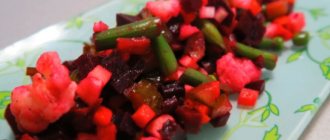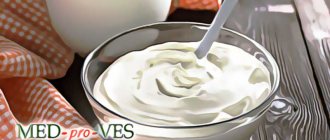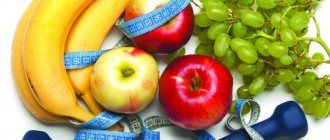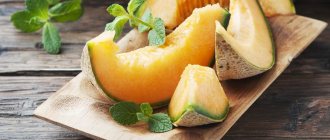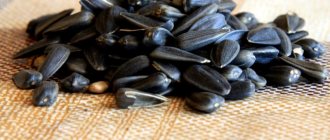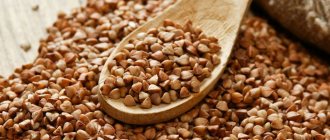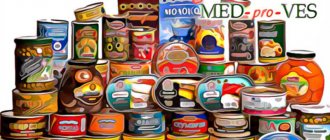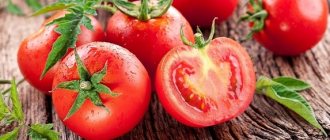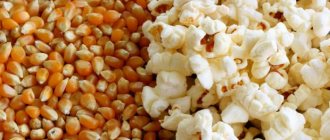Peculiarities
Buckwheat differs from most other cereals in its rich composition and very low calorie content. Thus, the calorie content of 100 grams of boiled buckwheat does not exceed 120 kilocalories, while it contains up to 20 grams of carbohydrates, up to 5 grams of fat and up to 4 grams of protein. There will be no more than 0.8 g of harmful saturated fat in such a serving - most of the fats that make up buckwheat are healthy mono- and polyunsaturated. This dish will be rich in vitamin PP, as well as B vitamins, which 100 grams of buckwheat contains:
- up to 0.5 mg vitamin B1;
- up to 0.2 mg vitamin B2;
- up to 0.4 mg vitamin B6.
This dish will contain useful microelements in noticeable quantities:
- sodium;
- iron;
- calcium;
- molybdenum;
- zinc;
- potassium;
- iodine;
- phosphorus;
- cobalt;
- fluorine.
With such a rich composition, this side dish is also good because it has practically no contraindications, so it can be safely recommended for cases when you need to feed a relatively large motley group (up to 4 people).
True, in this case it is better to avoid preparing buckwheat dishes with milk, because many modern adults suffer from intolerance to lactose, which is part of dairy products.
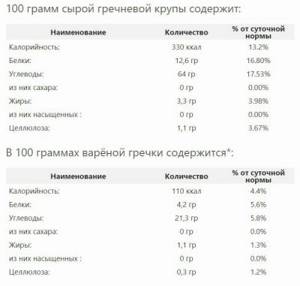
Chemical composition and nutritional value
The buckwheat diet is one of the most gentle and fastest ways to lose weight . Cereals contain most of the vitamins, minerals and amino acids necessary for humans. At the same time, it has a low calorie content and is not stored in fatty tissue. With its help, you can quickly lose weight without harming your body and without experiencing severe hunger.
Important! It is not recommended to “sit” on a buckwheat diet for more than two weeks. Otherwise, problems with the stomach and intestines will begin.
KBZHU raw buckwheat:
- nutritional value – 310 kcal;
- proteins – 16.6 g;
- fats – 3.3 g;
- carbohydrates – 62.1 g.
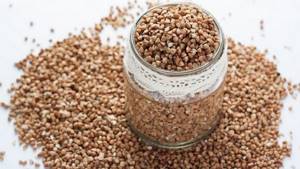
In its finished form, the calorie content of porridge without additives is only 132 kcal per 100 g.
Buckwheat contains a large number of useful microelements - even with a mono-diet, the body will not suffer from vitamin deficiency:
- Vitamins B1, B2, A, B6, PP, B9, E.
- Micro- and macroelements: iron, sodium, sulfur, calcium, silicon, potassium, magnesium, chlorine, phosphorus, sodium, copper, zinc, iodine, manganese, titanium, chromium, fluorine and nickel.
- Replaceable and essential amino acids.
- Starch.
- Alimentary fiber.
Buckwheat has a low glycemic index , which varies between 50-60. It is useful to include it in the diet of people who suffer from diabetes.
Useful properties of buckwheat
Buckwheat can not only help you get rid of extra pounds, but also improve the condition of your body.
It has an extensive list of beneficial properties:
- removes waste, toxins and bad cholesterol from the body;
- cleanses the intestines;
- has a positive effect on the condition of the skin, nails and hair;
- slows down skin aging;
- has a positive effect on liver function, making the skin look cleaner;
- strengthens the musculoskeletal system;
- activates mental activity;
- normalizes the functioning of the intestines and stomach.

Cooking porridge and side dishes
When preparing any second courses from buckwheat, it is important to remember the fact that when cooked, the volume of its grains increases on average 3 times. In this case, the final volume of the finished dish will depend on the amount of water used and the duration of cooking. Therefore, by controlling the ratio of the amount of liquid and buckwheat used, you can get a variety of dishes - from crumbly side dishes to viscous boiled porridges.
It is believed that the average portion of ready-made buckwheat per person weighs from 115 to 150 grams. Therefore, if you want to prepare medium-crumbly porridge for 1 person, then it is enough to take 50 grams of dry cereal (about one glass or three tablespoons). Buckwheat is cooked for 1 serving in an amount of water exceeding its volume three times - that is, the liquid will need to take about three glasses or ten tablespoons.
If you want to cook buckwheat for future use for 4 servings or for a company of four people, then all proportions are multiplied by 4, which means for four servings of buckwheat porridge, 200 grams of buckwheat (four glasses, twelve spoons) is enough, which needs to be filled with twelve glasses of water (this approximately two and a half liters). It follows from this that for buckwheat 1 kg of servings contains approximately 5.

If you want to get a more crumbly version of the buckwheat side dish, then the amount of water should be reduced at the rate of two glasses of water per glass of cereal. Then for four servings you will need the same four glasses of buckwheat, but eight glasses of water (1.6 liters).
To get, on the contrary, a more boiled and viscous version of the buckwheat dish, the amount of water can be increased at the rate of four glasses of liquid per glass of dry ingredient. Then for 4 people you will need 4 glasses of buckwheat and 16 glasses of water (3.2 liters).
Another interesting recipe for making buckwheat porridge - the required number of glasses of buckwheat is poured with fresh boiling water in a saucepan so that a layer of water up to 4 cm high forms above the layer of cereal. In this form, the pan should be left overnight - and in the morning you can have breakfast with delicious porridge .
If the buckwheat porridge is too crumbly for your taste, you can cook it in a little more water.
If it seems to you that there is too much water in the finished dish, then you can increase the friability of your side dish by frying or evaporating it, and also adding a little milk.

How to cook buckwheat
You should only buy buckwheat kernels in the store. Only whole grains contain the maximum amount of nutrients. After going to the store, the kernels are poured into a large bowl. Then pour in enough water to completely cover the layer of cereal. Cold water is used for rinsing, since scalding is not suitable for dieting.
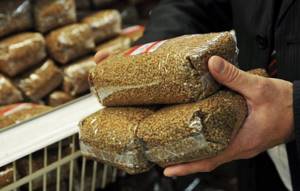
The most suitable option would be to choose light, lightly fried, and sometimes greenish grains.
It is believed that the best preparation option is a steam bath. To do this, use the following method:
- Clean cereal is poured into the pan.
- Water is boiled in a separate bowl. As soon as it boils, pour in the buckwheat in such a way that there is at least 2 cups of boiling water per 1 cup of kernels.
- Wrap the pan with cereal in a warm cloth.
- Buckwheat is infused for at least 3 hours.
Check out the properties of buckwheat flour with kefir for weight loss.
An alternative option is cooking. To do this, pour cereal and cold water into the dishes in a 2:1 ratio. Then it is placed on a gas stove. Medium heat is selected; when the water boils, reduce it to a minimum. The kernels need to be cooked until the water has completely boiled away. In this form, buckwheat can be stored in the refrigerator for about 6-7 days.
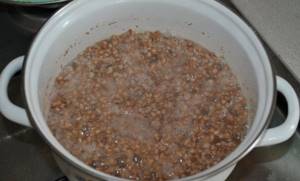
Cooking porridge from packaged buckwheat
Sometimes buckwheat is sold not in the form of loose cereal, but already packaged in portions in sealed permeable bags. In this case, for 1 serving, one or two sachets will be enough, which need to be filled with one and a half liters of hot water.
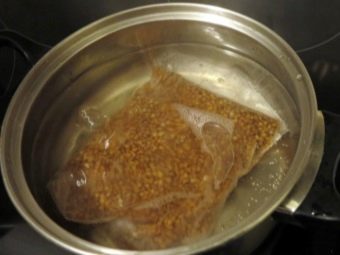
Making soup
When cooking soup you will need significantly more water. The standard portion of buckwheat soup for 1 person is 1 ladle (this is about 1/3 liter). To obtain such a portion you will need 20 grams of cereal and 300 milliliters of water. To prepare soup for a company of four people, you will need 80 grams of buckwheat and 1.2 liters of water. 80 grams of cereal is about one and a half glasses or four and a half tablespoons.
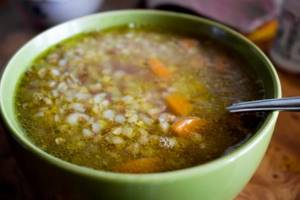
To learn how to cook buckwheat, see the following video.
- October 16, 2018
- Second courses
- Anna Kirnitskaya
For a variety of culinary recipes using buckwheat, it is necessary to determine the equivalent of cereals. If you have a special measuring cup, then everything is simple, but if you don’t have such a device on the farm, and you need to measure buckwheat now, a spoon or glass will do. You just have to figure out how much cereal will be in such a container. Many housewives are most often interested in the question of how much 100 grams of buckwheat is. Moreover, to complete the picture, we subtract the amount of dry cereal and boiled buckwheat.
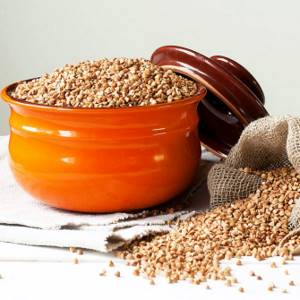
Everyone knows that in order to cook buckwheat porridge, you take cereal and water in a ratio of 1:2. 10-12 minutes will be enough for cooking, you need to maintain low heat. After heat treatment, it immediately becomes noticeable that the volume of buckwheat has tripled. So, how much is 100 grams of boiled cereal? Surely most housewives have faced this question. Let’s dot the i’s and find out in more detail how much is 100 grams of buckwheat in tablespoons.
How much is the volume of one hundred grams of buckwheat?
When calculating this value, you should first understand the parameters of density and volumetric mass. Dry buckwheat will have a density of 800 g/l (grams per liter), which means that only 800 grams of product will fit into a liter jar (level with the top of the jar). In this case, the volumetric mass is 1.250 l/kg (liters per kilogram), that is, 1 kilogram of buckwheat will not fit in a liter jar, since it takes up more - 1.250 containers. Considering the features described above, remember that the answer to the question of how much 100 grams of buckwheat is is simple. One hundred grams of buckwheat occupies a volume of 125 milliliters.

What harm can buckwheat cause?
Buckwheat is a healthy product, but long-term adherence to a mono-diet will not bring benefits . If you eat this diet for more than two weeks, you run the risk of hormonal imbalance and metabolic failure. This will lead to gaining extra pounds and health problems.
Buckwheat does not contain sufficient quantities of all necessary vitamins and substances . It is recommended to use buckwheat relief no more than once a month. The longer the buckwheat diet is followed, the less often it is used for weight loss.
Another danger of the buckwheat diet is “breakdowns” . Often, after a long-term restriction in the diet, those losing weight begin to eat unhealthy foods in unlimited quantities, and the weight that they managed to get rid of comes back again. To prevent this from happening, it is recommended to adhere to proper nutrition after unloading.
There are a number of contraindications in which long-term weight loss on buckwheat is prohibited:
- diabetes;
- work associated with high physical activity;
- hypertension;
- acute diseases of the stomach and intestines;
- diseases of the cardiovascular system;
- kidney problems;
- individual intolerance to buckwheat;
- planned surgery in the next month.
How much buckwheat is in 1 glass?
Now we have to figure out how many glasses 100 grams of buckwheat are. When understanding this issue, it is worth paying attention to the fact that there are two types of glasses: tea glasses and faceted glasses. Both are characterized by a volume of 250 ml, provided that the container is filled to the top.
The main difference between a faceted glass is a narrow strip located in the upper part, popularly called a rim or a belt. The volume of such a vessel along this very rim is 200 ml. It is important to know about this, since a cut glass is used in cooking more often than a tea glass.
Both glasses will contain 200 grams of cereal. This is provided that the container is filled to the top. Therefore, when figuring out how much 100 grams of buckwheat is, remember that in a glass half-filled there is exactly 100 grams of it.
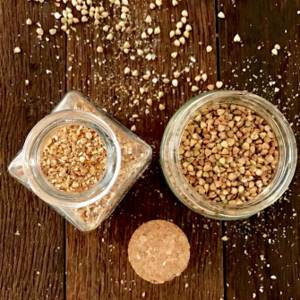
How much boiled buckwheat can be made from dry cereal?
To cook buckwheat porridge, take 100 grams of buckwheat kernels and 200 ml of water. It is known that 200 ml of water is equal to 200 g. If the technology for preparing buckwheat porridge is followed, a small amount of water evaporates, and this percentage is about 10-15%. At the same time, the porridge is never fresh. Depending on the recipe, salt, sugar, milk, butter, etc. are added to the cereal. Therefore, depending on the preparation technology and the porridge recipe, from 100 grams of dry product the output is 270-300 grams of boiled porridge.
Here is the answer to this frequently asked question: 100 g of buckwheat - how much boiled cereal is this.
Diet rules
The history of this diet began as an ordinary fasting day, which women arrange from time to time to maintain their body and figure in good shape. Usually during this period they eat exclusively porridge, washed down with green tea. After just a few weeks, you can see the first positive changes in your waist. Weight decreases by 1-2 kg. The innovative diet is built on the same principle. Only the period of its implementation lasts 3, 7 and 14 days.
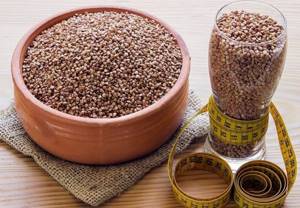
Among the most important rules that should be followed are the following:
- The eating process is divided into 5 times.
- You are allowed to eat at least 400 grams of cereal per day, which is considered dry. In this case, cooked porridge is the main dish.
- The greatest effectiveness is achieved by consuming unroasted buckwheat. Although it is difficult to find on store shelves, it is worth purchasing the raw product.
- You should drink at least 1.5 liters of water throughout the day. A mineral or well-purified liquid is best for this. The norm is up to 2 liters.
- The last portion of porridge should be consumed no later than 7 pm.
- In addition to the cereal itself, other products are also allowed. You can drink low-fat kefir or tea. And in addition to a portion of porridge, there will be vegetables without starch or sour fruits.
- Adding green tea to your diet, which is consumed without granulated sugar, will bring undoubted benefits. It is advisable to drink the infused drink 30 minutes before meals. In addition, tea helps normalize the functioning of the nervous system. This has a beneficial effect on the body during weight loss.
- You need to sleep about 8 hours a day. This is a normal and necessary period of rest for every person, guaranteeing complete relief from fatigue.
- Such weight loss is fraught with stretch marks. These are specific neoplasms on the skin that arise as a result of the deprivation of a layer of fat. To eliminate them, experts recommend using any anti-cellulite cream. Taking a contrast shower will also help.
- The effectiveness of the diet will be increased by a set of simple physical exercises.
- A diet of eating only one type of food depletes the body. He loses a lot of vitamins. Complex drugs that can be purchased at the pharmacy will help restore them.

According to nutritionists, the weight loss procedure for a period of 7 days is painless. But, in order to avoid any side effects, it is still recommended to think over the menu for this period.
Diet Basics
To get the most effective results, during the diet you should prohibit yourself from eating many foods that make up the regular menu. If you have an irresistible desire to eat something sweet, you can opt for fruit. Apples, pears or plums will not cause much harm to a strict diet. When preparing porridge, you must make sure that the cereal remains soft. If it is undercooked, there is a risk of damage to the intestinal walls.
Did you know? Scientists have proven that buckwheat improves brain function, improves emotional state and elevates mood.
To prepare buckwheat, a fairly large amount of water is used. We must not forget about the constant intake of liquid. Some nutritionists advise increasing the daily intake to 2.5 liters. It is also not recommended to use mineral waters with gas. The maximum period should be no more than 14 days. Otherwise, you can cause irreparable harm to your health. It is also prohibited to use instant cereals - only natural cereals are considered suitable as a product.

One of the most important conditions is thorough chewing of food.
What should you exclude from your diet?
A weight loss course using buckwheat porridge is considered a mono-diet - this means that you can eat only one main product with a minimum of additives. So throughout the entire period, many foods will have to be excluded from your daily diet.
Also learn how to brew Chinese buckwheat tea.
Among them:
- spices;
- fatty foods;
- salt;
- meat in any form;
- sugar;
- smoked products;
- fish;
- nuts;
- any sweets.

Naturally, it is prohibited to drink any carbonated or strong drinks. Even drinking coffee is not recommended.
Eligible Products
Nevertheless, there are a number of foods that are allowed to be consumed during such a diet.
Namely:
- Natural bee honey. It is usually added to sweeten porridge. No more than 1 tsp can be used per 100 g of finished product. In addition to the pleasant taste, such consumption will help restore the level of vitamins in the body.
- Dried fruits . Another source of vital microelements. They can be consumed in small quantities separately or added to porridge.
- Onions or green onions. The main advantage of this plant is that it is able to resist various viral infections. At the same time, onions have a specific taste that will help diversify buckwheat porridge. In the most extreme cases, it can even be fried in a small amount of sunflower oil.
- Natural origin yoghurts. They are often mixed with a small amount of berries or fruits, but adding sugar is prohibited. This drink is considered an alternative replacement for kefir.
- Boiled chicken or lean fish. These foods can be eaten in small quantities. You can eat no more than 150 g of meat or fish per day. In addition, they are ideal for steamed buckwheat. And the body will receive useful amino acids that are not found in other products.
- Quail or chicken egg white. They can be used as an addition to the main dish.
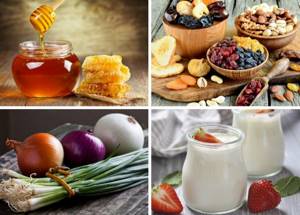
All these products will be beneficial only if they are used in accordance with the established norm. Otherwise, the result of the diet may not please you.
What can you drink
Among the drinks that are allowed to be consumed throughout the diet, the main place is occupied by non-carbonated table mineral water. It can be replaced with regular boiled one. It is recommended to use the amount required by the body. However, in order not to harm yourself, the minimum norm should be 1.5 liters.
We recommend that you find out how sprouted green buckwheat is beneficial for the human body.
In addition, you can drink 1 liter of low-fat kefir throughout the day. 1 glass can be consumed just before going to bed. If you feel very hungry and need to snack on something, it is best to use 200 ml of this drink. It is also necessary to normalize the consumption of kefir and drink it at a strictly defined time - 30 minutes before or after eating the main meal is considered the most appropriate.

Sometimes porridge causes slight disgust when used daily. Therefore, kefir can be poured into the buckwheat itself.
In addition to this drink, it is allowed, and even recommended, to drink tea without sugar. However, some nutritionists argue that drinking it (like coffee) is not permissible. The main reason is considered to be rapid dehydration of the body due to the fact that these drinks accelerate the formation of urine.
Is it possible to salt buckwheat?
Even sugar, spices and sauces, as well as salt should not be used for cooking. Any sweetener, including salt, provokes appetite. In order not to eat a lot during the diet, you should avoid using them.
Did you know? Researchers at the University of Michigan (USA) found that dog owners lose weight faster and gain weight slower. When walking and playing with a dog, they triple their energy expenditure and perform 34% more movements compared to people who do not have these pets.
Vegetables
According to general information, it is permissible to use vegetables during a diet. However, not every crop will benefit. Therefore, it is worth finding out in advance what vegetables are allowed to be consumed during this period. The classic version of the diet states that any fruits can be eaten only when leaving the diet and only if a light diet has been chosen. Accordingly, those species that do not contain starch can be added to the diet.
Most often used:
- broccoli;
- cauliflower;
- cucumbers;
- onion.
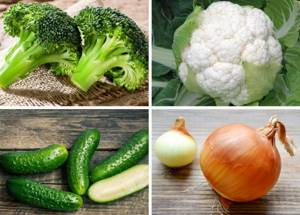
You can treat yourself to lettuce or spinach leaves and fresh tomatoes. White cabbage is prohibited for consumption - it often makes you feel hungry. In some cases, gastric bloating is observed.
